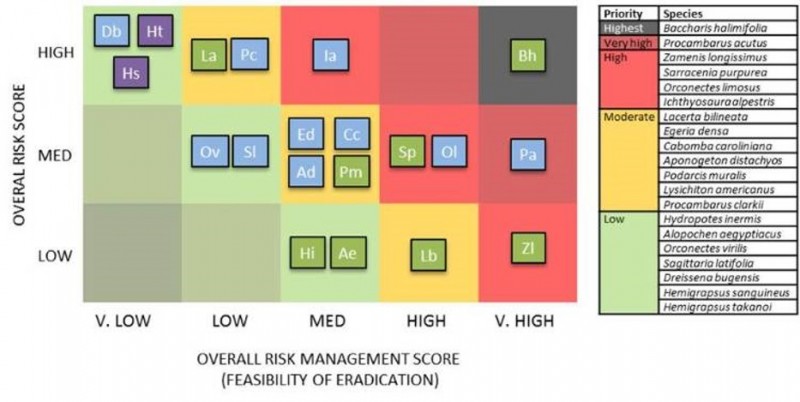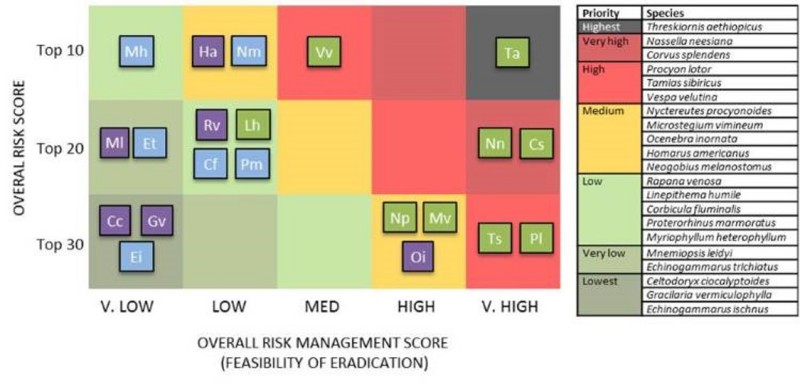Risk management is the process of evaluating and implementing management options in order to reduce the risk posed by invasive non-native species. These pages describe the GB risk management tool which is used, in combination with risk assessment, to help prioritise the eradication of invasive species. Outputs from this tool are also included on this page and will be updated.
About risk management
Risk management provides a structured evaluation of measures that can be used to reduce risk (Baker et al. 2005; OiE 2015; IPPC 1997; Vanderhoeven et al 2017). It can be used, in conjunction with risk assessment, to indicate priorities for management. There are few schemes available for invasive non-native species risk management and so a novel scheme has been developed to support the GB risk analysis mechanism. The GB Non-native Risk Management (NNRM) scheme (Word) evaluates the feasibility of eradicating any non-native species based on predefined criteria (effectiveness, practicality, cost, negative impacts of management, acceptability, window of opportunity and likelihood of reintroduction).
The results of the NNRM can be combined with risk assessment scores to prioritise species for eradication: with high risk species for which feasibility of eradication is high prioritised above species that are low risk and for which feasibility of eradication is low.
The scheme and a description of its use are available via the links below:
- Guidance and template for the Non-native Risk Management scheme (Word doc)
- Risk management to prioritise the eradication of new and emerging invasive non-native species (external link) - a scientific paper on the development and use of the scheme.
Prioritising the eradication of new and emerging invasive non-native species in GB
A prioritisation exercise (external link) was undertaken in 2015 to evaluate the feasibility of eradicating 41 new and emerging species in Great Britain (including 21 horizon scanning species and 20 species that were established in GB but with limited distributions). These results were used, in combination with existing risk assessment / horizon scanning scores, to identify priorities for eradication and contingency planning. The figures below illustrate how the scores were used to indicate priority. These diagrams how species can be prioritised for eradication using both risk management scores on the x axis and risk assessment scores on the y axis. Species with high scores for both axes have highest priority.
Priorities for eradication of established species


